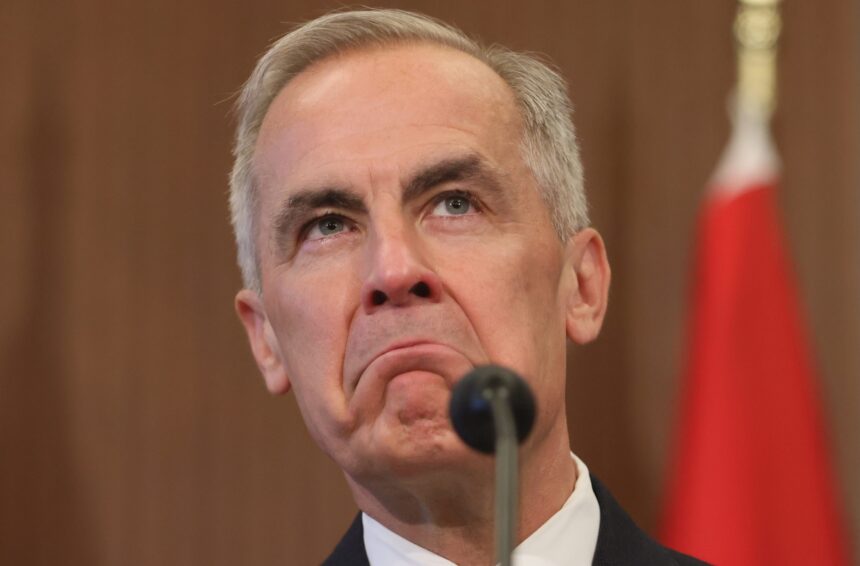In a decisive response to mounting trade pressures, Finance Minister Mark Carney unveiled Canada’s comprehensive counter-tariff strategy yesterday, targeting $4.8 billion worth of American steel and aluminum imports. The announcement comes after weeks of escalating tensions following Washington’s controversial decision to reimpose Section 232 tariffs on Canadian metals.
“We will not stand idle while Canadian workers and communities face unjustified trade barriers,” Carney declared from the steps of Parliament Hill, his voice steady despite the biting Ottawa wind. “These measured and proportionate counter-tariffs reflect our commitment to defending our economic sovereignty while maintaining our broader trade relationship with our closest neighbor.”
The counter-measures, set to take effect July 1, represent the Trudeau government’s most significant trade action since the 2018-2019 tariff dispute. Industry analysts note this response appears more strategically targeted than previous measures, focusing primarily on products from politically sensitive regions across the United States.
A detailed examination of the tariff list reveals careful political calibration. Steel products from Pennsylvania and Michigan—both crucial swing states in the upcoming U.S. election—feature prominently, alongside aluminum goods from Kentucky and Tennessee. According to CO24 Business analysis, these targeted measures could apply maximum pressure while minimizing disruption to integrated supply chains.
“This isn’t just about retaliatory tariffs—it’s about sending a clear message about Canadian resolve,” explained Heather McPherson, vice-chair of the Commons trade committee, during an exclusive interview. “We’ve demonstrated time and again our commitment to rules-based trade, but we cannot allow our industries to become collateral damage in America’s domestic political calculations.”
The counter-measures have received rare bipartisan support in Ottawa. Conservative trade critic Michael Chong called the move “necessary, if regrettable,” while emphasizing that “defending Canadian steel and aluminum workers transcends political divisions.” The unified front presents a stark contrast to the fractured response during previous Canada News coverage of trade disputes.
Economic impacts remain concerning. The Business Council of Canada estimates the original U.S. tariffs could cost the Canadian economy approximately $3.2 billion annually and potentially eliminate 6,000 jobs across the metal manufacturing sector. Meanwhile, analysis from RBC suggests these counter-measures could recover approximately 40% of those losses through increased domestic consumption.
For communities like Hamilton, Ontario and Saguenay, Quebec—regional hubs for steel and aluminum production respectively—the stakes couldn’t be higher. “These are more than just statistics,” noted Saguenay Mayor Julie Dufour. “Each job represents a family’s livelihood and the economic backbone of our community.”
International reaction has been predictably mixed. The European Union expressed solidarity with Canada’s position, with EU Trade Commissioner Valdis Dombrovskis stating the bloc “understands Canada’s need to respond to unilateral measures.” Meanwhile, U.S. Trade Representative Katherine Tai criticized the counter-measures as “disproportionate and unwarranted.”
Industry stakeholders have generally welcomed the government’s response. Catherine Cobden, president of the Canadian Steel Producers Association, called the counter-tariffs “an unfortunate necessity” while urging continued diplomatic engagement. “We remain hopeful that both countries can return to the tariff-free relationship that has served our integrated economies so well,” she added.
The Trudeau government has emphasized that diplomatic channels remain open, with both Carney and Trade Minister Mary Ng scheduled for high-level meetings in Washington next week. Sources close to the negotiations suggest Canada has proposed several potential off-ramps that would allow both sides to de-escalate without significant loss of face.
As markets digest this latest development in the ongoing trade saga, one question looms large: will these counter-measures succeed where diplomatic entreaties have failed, or are we witnessing the opening salvos of a broader trade conflict that neither side truly desires? The answer may determine not just the future of North American steel and aluminum industries, but the health of the world’s most important bilateral trading relationship.


















